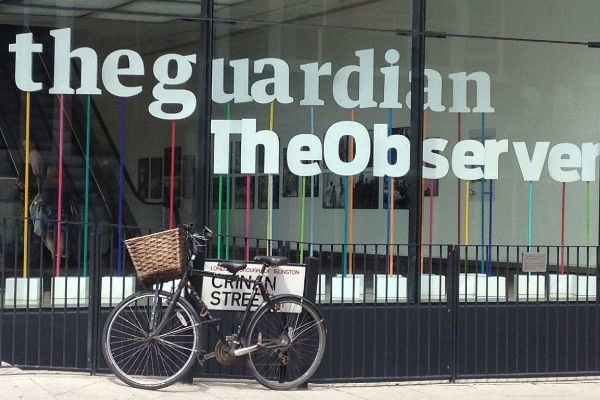- Baleares, Francisco Armengol, among the regional presidents who paid to go out in 'The Guardian'
- Politics: Ximo Puig paid 43,000 euros for being interviewed in 'The Guardian'
The "paid contents" are already an integral and visible part of the media on the internet. It is a way of obtaining income such as classic advertising, which today have largely taken those voracious 'aggregators' such as Google or Facebook. They are undoubtedly lawful if they are correctly and clearly identified as such. Here, in EL MUNDO, they are presented with a colored background and a signature of the company that pays them: "A Caixabank project", "An Acciona project".
The problem raised by The Guardian , the great newspaper of the British left, is that a political content interview is much more easily confused with pure and hard information than, for example, "a quick guide to stop using plastic at home" . And it seems that this way it was much easier for Ximo Puig and other Spanish politicians - from the left and the right - to pass their publicity reports in the London newspaper through newspaper interviews.
The image, ideology and fame of The Guardian have a lot to do with it, of course, and they provoke sarcastic reactions like that of John Müller, columnist for THE WORLD, yesterday on Twitter: "They will say that Facebook and the RRSS spread fake news , that Cambridge Analytica exercises mental control over you, but they will never tell you that they interviewed Spanish politicians in exchange for money to increase their fame . "
The fact is that, as the Economist correctly pointed out yesterday, who had spread the story, The Guardian does identify these contents ... in his own way, let's say. In these cases of Spanish characters, the thirsty interviews appear on a page product of the newspaper's collaboration with The Report Company , a company that produces the contents, charges them to interested parties and then pays The Guardian for their insertion.
Just approach the web of the newspaper to discover to which category each content belongs. The newspaper explains that "it produces a variety of content paid for by external sources " and that this "allows exploring topics that we hope will be of interest to readers." And the key: "The presentation of the content makes it clear how it was generated and who funded it. One of these three labels will appear on it: 'Backed by', 'Content paid for' or 'Advertising content / of our advertisers'.
And it turns out that only the contents of the first category, 'Backed by', are endorsed and controlled by the Drafting. The interview with Puig was labeled 'Content paid for', and there is no doubt: "This tag is used to describe advertising issues that are paid and controlled by the advertiser and not by the publisher . (...) This content is produced by commercial departments and does not involve journalists from the Guardian News Media Editorial. "
Publireports, then. No doubt. In his day we missed reading the fine print and we listened to Puig when he presented it as a journalistic work, and we assume that the same happened with the other Spanish politicians.
According to the criteria of The Trust Project
Know more- Ximo Puig
Editorial Put a stop to the digital giants
EditorialMacron saves a very divided G-7
TribunaSpectros of a video

